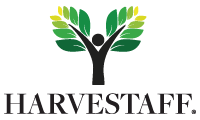Why Companies Need to Build an Agile Workforce
The labor force market is perpetually changing, with new degrees of progress that change the standard method for working and the latest developments demanding more flexible setups. For instance, remote working has nearly eliminated in-office work, with a reliably growing number of affiliations starting to change to telecommute approaches and permitting their representatives to report off-site. This is particularly clear during a period of a pandemic when businesses expected to close down authentic workplaces and team up with their representatives in distant game plans.
This is only a solitary portrayal of the uncontrolled changes that plague the expert circle. By temperance of how quickly things are making, the essential way for a business to ride the tide and endure is to recognize how to change. They should be adaptable to stay aware of and satisfy the prerequisites of the current time — and that is the place where an agile workforce comes in.
What is an Agile Workforce?
An agile workforce is one that has adaptable cycles, is dynamic, and that permits a company to genuinely react to changes and adjust to progressing patterns. To spread it out essentially, it's the lifeblood of an organization, permitting it to beat any upgrades that change their industry and the labor force market.
Agility is a fundamental factor that upholds business execution and helps an organization stay relevant and address the issues of a constantly changing business area. It has become more important in a period like a pandemic, where the conceivable predetermination of work is changed.
Qualities of an Agile Workforce
An agile workforce can be portrayed by the accompanying qualities:
Independence
Most businesses have drawn-out and extended frameworks for their operations. For the most part, upper association settles on the choices and puts down rules or instructions for the groups to follow. In the event that conditions emerge that are not covered by existing standards, workers would need to return up the line to look for counsel from the board.
While this standard cycle has worked in the past, time is huge in the current day and age. This makes it more significant for management to figure out some approach to trust their workers and engage them to pick, see issues, and discover solutions uninhibitedly.
Adaptability
An agile workforce is flexible and doesn't conform to set standards or rules. Preferably, the manner in which it works is to have delegates taking an interest and being cross-functional in various occasions. The thought is that everybody is secured and involved at all times of an undertaking, contributes to one another relying on the need, and changes themselves as shown by the interest of the work that is being finished.
Speed
Independent and adaptable labor forces assist accelerate measures with growing cycles and procedures in the organization. An agile workforce takes out the inconsequential nuances, obstructions, and excessive systems and is engaged to settle on their own choices. Specialists are locked in to adjust to plans, make changes inside cycles, and change comparable to recent developments — without going through such inestimable strides to do it. Thus, the organization can remain ahead of their competition and adjust to changes faultlessly and customarily.
Why Do You Need to Build an Agile Workforce?
Agile workforces perform better than the customary labor force strategies and cycles that we have all become absurdly acquainted with. By changing to a versatile strategy for working, companies can work on their internal procedures similarly as see an expansion in their bottom line. Coming up next are several advantages of an agile workforce:
Reduce Costs
Since agile workforces attract experts to settle on their own choices and manage issues through their own answers, they viably assist the company with decreasing expenses. This is inferable from the setback of over-the-top turns of events, long uncovering chains, and so on that requires some time investment. At the point when groups can become cross-functional and autonomous, they can work significantly more effectively and gainfully, settle on choices quicker, and reduce the need to spend excessive energy and cash.
Further Improve Outcomes
An agile workforce that is free of negligible rules and denied of long and outrageous systems makes the experts closer and empowers them to create direct associations with clients. This awards them to understand the essentials of the end market much more and direct ways to cultivate yields rapidly and adequately.
Develop Employee Retention
These days, workers don't like being irrationally skimmed over. They need to feel viewed as basic pieces of an organization and like it if their bosses trust them to settle on their own choices and plan as shown by what they acknowledge as ideal. Giving representatives this sort of support accomplishes more joyful laborers who feel like they have control of their expert development, and considering more delighted professionals, they are pushed to remain in the company longer.
How to Build an Agile Workforce
Building an agile workforce begins with selecting the best individuals with the right skills, gifts, and points of view. Companies should enlist individuals who encapsulate agility and make a team that can enable the way of life that mirrors an agile workforce.
Searching for workers who will make a solid addition to your agile workforce? Contact HarveStaff today. We can assist you with discovering talents who match your company culture, meet your prerequisites, and who will fill in as resources for your agile workforce.
